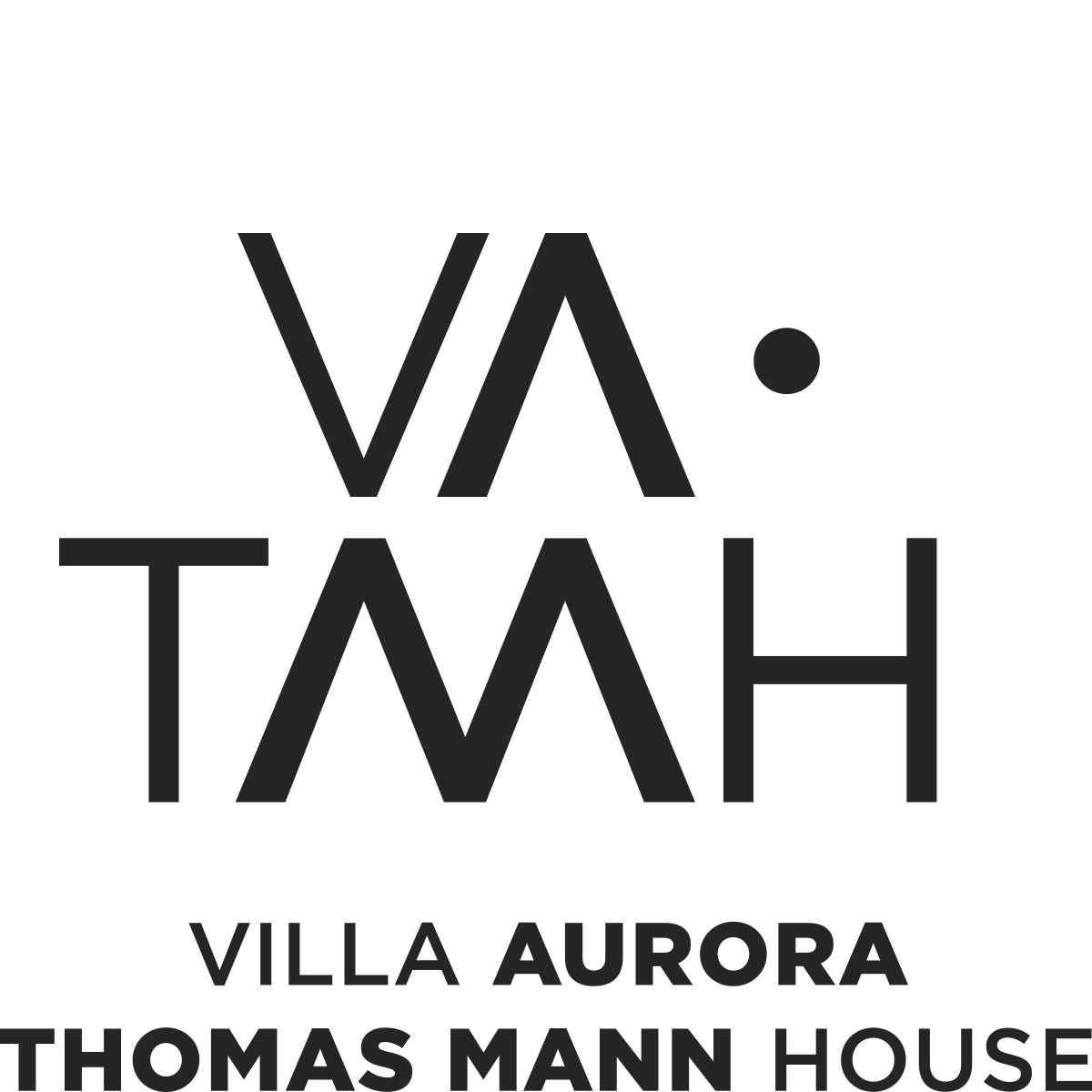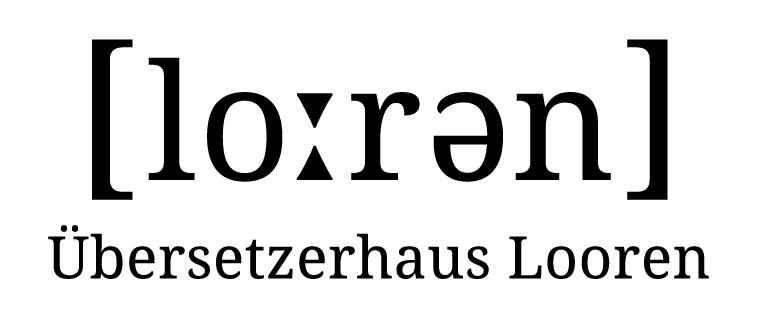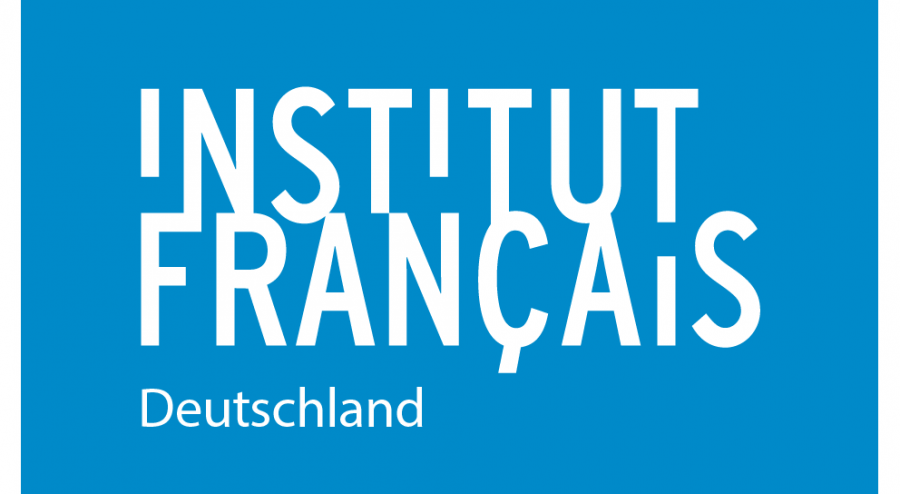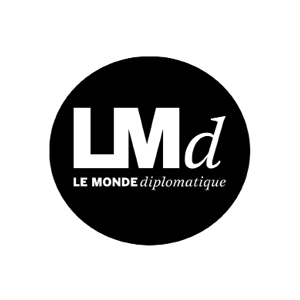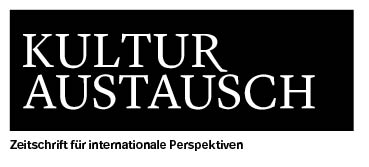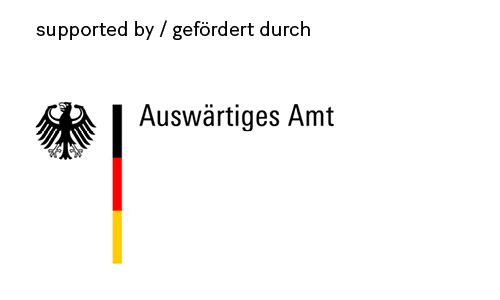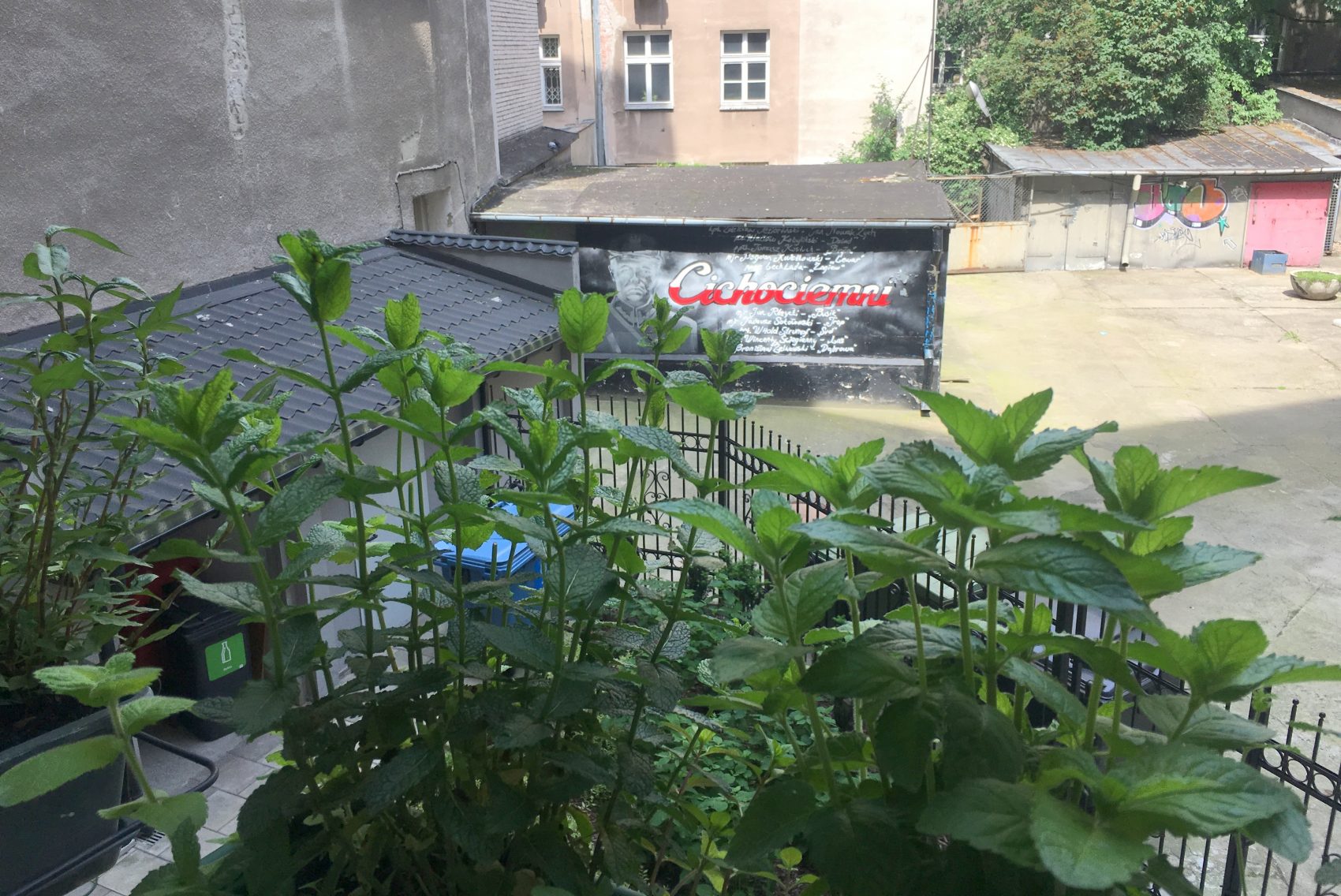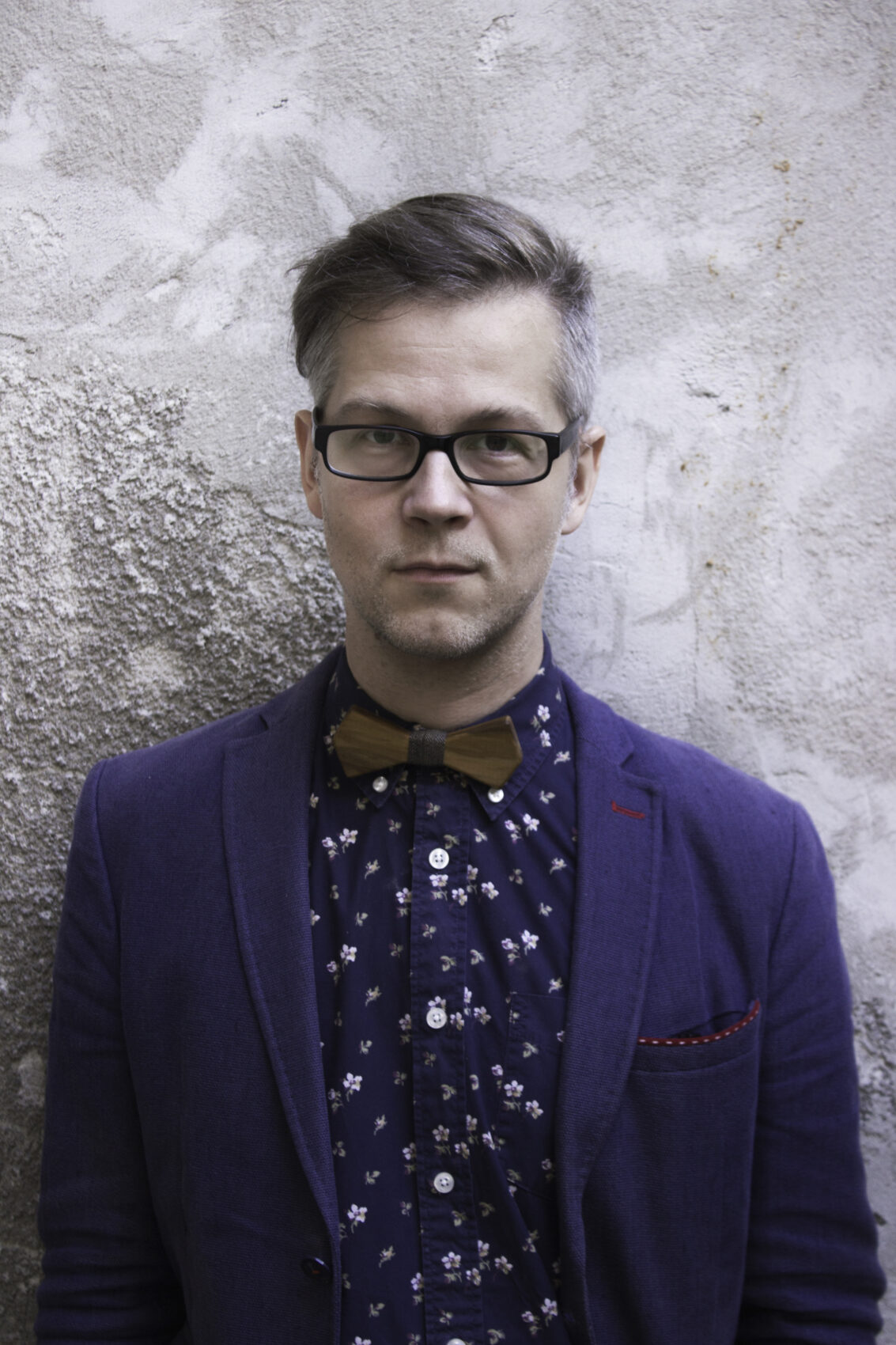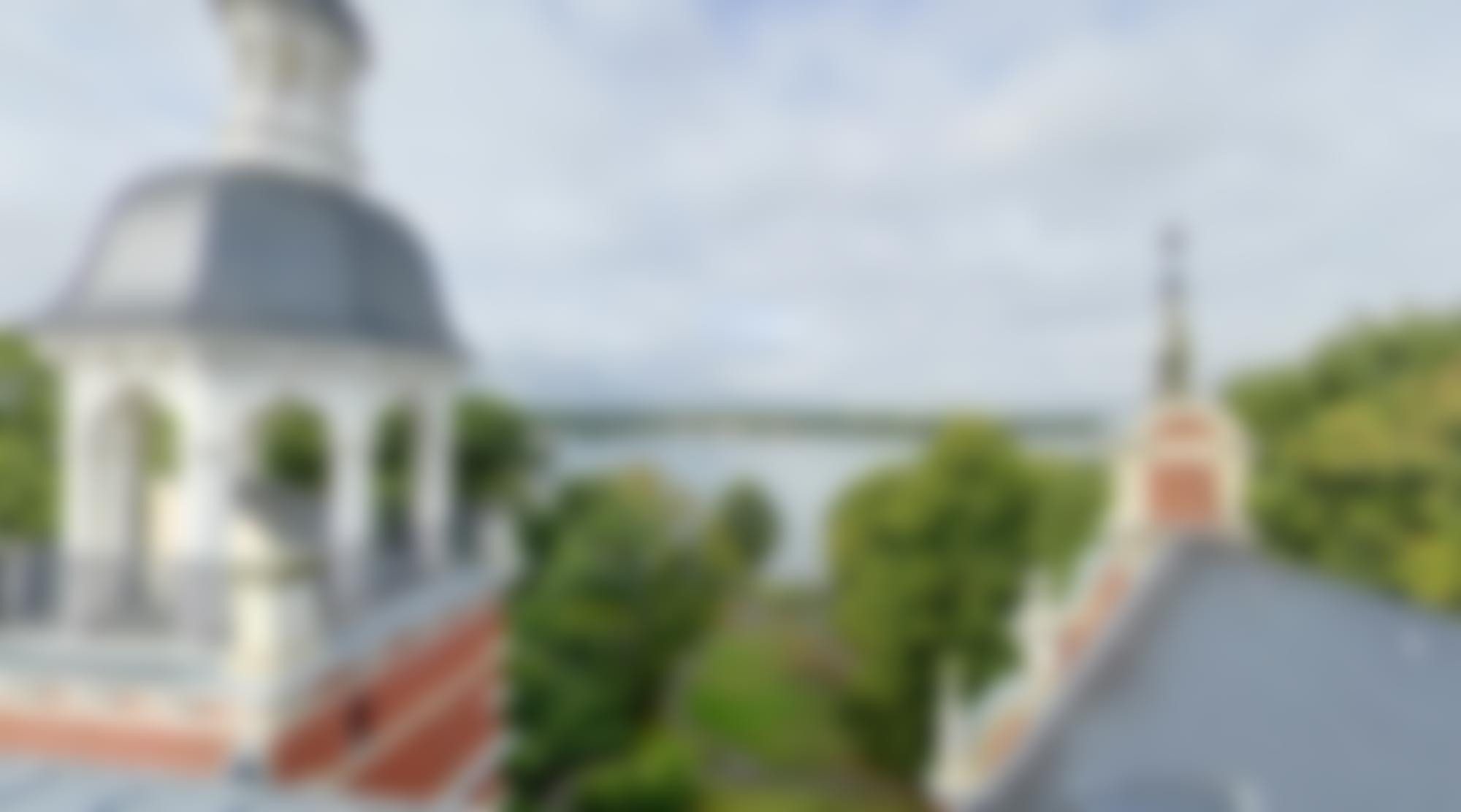Mural
Nasze mieszkanie ma dwa balkony: od frontu świetlisty, a od podwórka drugi, cienisty, gdzie mało co chce rosnąć. Tu późną wiosną sadzę różne gatunki bazylii i mięty, potem zaś codziennie przychodzę je podlewać. Podwórze dzielimy ze szkołą, a to, co widać wyżej, w głębi, nad zielonymi gałązkami to mural – więc patrząc na moją miętę i bazylię, muszę też patrzeć na mural.
Kto mieszka w Polsce, ten od razu rozpozna tę stylistykę: czerń, czerwień i biel są związane z propagowanym przez prawicę i neofaszystów kultem „żołnierzy wyklętych”, czyli działającego po II wojnie światowej antykomunistycznego podziemia. Tym terminem określa się zbiorczo zarówno resztki partyzantki z czasów wojny, jak i pospolitych bandytów, dokonujących czystek etnicznych. Ma to na celu zastąpienie pamięci o wielkim, legalnym i politycznie umiarkowanym Państwie Podziemnym – kultem ultraprawicowych watażków, którzy sami sobie nadawali prawo do decydowania o życiu i śmierci. Mural jednak – przy całej swojej nieudolności i brzydocie – poświęcony jest „Cichociemnym”, czyli komandosom Armii Krajowej, podlegającej Państwu Podziemnemu.
Z początku był podpisany: Czarne Szczury i Wariaci z Technikum. Pierwsi to mała neofaszystowska organizacja, chwaląca się, że ich wzory to Mussolini i Putin, drudzy – grupka pomagierów, miejscowych uczniów, którzy dotychczas gryzmolili na okolicznych kamienicach krzyże celtyckie. Nic więc dziwnego, że postanowiliśmy zaalarmować nauczycieli, kto wymalował mural za ich pozwoleniem; kiedy weszliśmy do tamtej części gmachu, ujrzeliśmy również drugą część malowidła: był to bolszewik z podbitym okiem oraz wielkim żydowskim nosem, wziętym prosto z karykatur w „Der Stuermer”.
Dyrekcja, świeżo naznaczona przez nową ministerkę oświaty, przyjęła nas grzecznie, powiedziała, że zapoznała się z przesłanymi materiałami o faszystowskiej organizacji, ale szkoła nie ma wpływu na to, z kim zadają się po lekcjach uczniowie, że należy docenić patriotyczny pomysł młodzieży oraz że „to nie jest żaden żydowski nos, tylko państwa skojarzenia”. Ostatecznie zgodzono się zamalować podpis, a po uroczystościach poświęconych „Cichociemnym” – cały mural.
Po czterech latach mural ma się świetnie. Ministerka oświaty, przeprowadziwszy katastrofalną w skutkach „deformę oświaty”, została europosłanką. Mięta nadal rośnie, w cieniu ma się dobrze.
Das Graffito
Unsere Wohnung hat zwei Balkone: an der Vorderfront einen hellen und hinten, zum Hof hin, einen schattigen, wo wenig wachsen will. Hier pflanze ich im späten Frühjahr verschiedene Arten von Basilikum und Minze und komme dann jeden Tag, um sie zu gießen. Den Hof teilen wir uns mit einer Schule; und das, was weiter hinten zu sehen ist, über den grünen Blättern der Kräuter, ist ein Graffito – wenn ich also meine Minze und mein Basilikum betrachte, muss ich auch auf das Graffito schauen.
Wer in Polen lebt, erkennt diesen Stil sofort: Schwarz, Rot und Weiß verbindet man mit dem von der Rechten und den Neofaschisten propagierten Kult der „Verstoßenen Soldaten“, das heißt, dem nach dem Zweiten Weltkrieg agierenden antikommunistischen Untergrund. Mit diesem Begriff bezeichnet man sowohl die aus der Kriegszeit übrig gebliebenden Partisanen als auch gewöhnliche Banditen, die ethnische Säuberungen durchführen. Ihr Ziel ist, die Erinnerung an den großen, legalen und politisch gemäßigten Untergrundstaat durch einen Kult ultrarechter Bandenführer zu ersetzen, die sich selbst ermächtigt haben, über Leben und Tod zu entscheiden. Das Graffito ist jedoch – bei seiner ganzen Hässlichkeit und Unbeholfenheit – den „stillen Dunklen“ gewidmet, das heißt den Fallschirmjägern der Heimatarmee, die dem Untergrundstaat unterstellt war.
Anfangs war das Graffito mit „Schwarze Ratten“ und „Verrückte vom Technikum“ unterzeichnet. Erstere gehören zu einer kleinen neofaschistischen Organisation, die sich rühmt, ihre Vorbilder seien Mussolini und Putin, letztere zu einer Gruppe von Helfern, hiesigen Schülern, die bisher Keltenkreuze an die Häuser der Umgebung geschmiert hatten. Kein Wunder, dass wir beschlossen, die Lehrer zu alarmieren, um zu klären, wer das Graffito mit ihrer Erlaubnis an die Mauer gemalt hatte; als wir den anderen Teil des Gebäudes betraten, sahen wir auch den zweiten Teil der Wandmalerei: Es war ein Bolschewik mit einem blau geschlagenen Auge und einer großen jüdischen Nase, wie direkt einer Karikatur aus dem „Stürmer“ entnommen.
Die Direktion, frisch eingesetzt von der neuen Bildungsministerin, empfing uns artig und sagte, sie habe sich mit den eingesandten Materialien der faschistischen Organisation vertraut gemacht, aber die Schule habe keinen Einfluss darauf, was die Schüler in ihrer Freizeit machten; und man solle doch die patriotische Idee der jungen Leute wertschätzen, im übrigen sei das „keine jüdische Nase, sondern nur Ihre Assoziation.“ Letztendlich einigte man sich darauf, dass die Unterschrift – und nach den Feierlichkeiten für die „stillen Dunklen“ das gesamte Graffito – übermalt werden sollten.
Nach vier Jahren geht es dem Graffito hervorragend. Die Bildungsministerin, die eine „Deform der Bildung“ mit katastrophalen Folgen durchgeführt hat, ist heute Abgeordnete im EU-Parlament. Die Minze wächst weiter, sie fühlt sich wohl im Schatten.
Übersetzung: Renate Schmidgall
The Mural
Our flat has two balconies – the one at the front has good light, but the one overlooking the courtyard is in shade, so not much can grow there. In late spring I plant several kinds of basil and mint there, and every day I come out to water them. We share the courtyard with a school, and what you can see on the far side of it, above the sprigs of mint, is a mural – so I can’t look at my mint and basil without looking at this mural too.
Anyone who lives in Poland will immediately recognize the way it’s stylized: the colours red, black and white are linked with the cult, promoted by the political right and the neo-fascists, of the “cursed soldiers”, meaning the anti-communist underground that was active after the Second World War. This term also collectively defines the last remnants of the partisans from the war years, and also the common thugs who carried out ethnic cleansing. Its aim is to replace our remembrance of the large, legal, and politically moderate Polish Underground State with the cult of the ultra-right warlords who awarded themselves the right to decide who lived and who died. But the mural – for all its clumsiness and ugliness – commemorates the “Cichociemni” (literally, the “quiet-and-dark”), who were paratroopers in the Home Army, which was subordinate to the Underground State.
Originally it was signed: “The Black Rats and Crazies from the High School”. The former are a small neo-fascist organisation, who boast of having Mussolini and Putin as their models, and the latter are their hangers-on, a handful of teenagers from the school next door, who used to limit themselves to scrawling Celtic crosses on the sides of houses in the neighbourhood. No wonder we decided to warn their teachers who was actually behind the mural they had allowed their pupils to paint. When we went into their part of the building, we saw the other part of the mural too: it featured a Bolshevik with a black eye and a large Jewish nose, just like the caricatures that used to appear in the Nazi weekly Der Stürmer.
The school’s head teachers, newly appointed by the new minister of education, received us politely, and said they had familiarized themselves with the material we had sent them about the fascist organisation, but the school had no influence on their pupils’ choice of company after school hours; we were told we should appreciate the young people’s patriotic initiative, and that “it’s not a Jewish nose, that’s just your association”. Eventually they agreed to paint over the signature, and following a ceremony to commemorate the “Cichociemni”, the entire mural would go.
Four years on, the mural is doing fine. After introducing an educational “deform” that has had catastrophic consequences, the minister of education has now become an MEP. The mint is still growing very happily in the shade.
Translation: Antonia Lloyd-Jones
Share
-
02 Freitag
19:00 UhrLiteratur in den Sprachen Berlins 2022
Burcu Argat, Jacek Dehnel, Rafael Cardoso, Nikolay Kononov, Jonathan Lyon, Dilek Mayatürk, Bahram Moradi, Madame Nielsen und May-Lan Tan
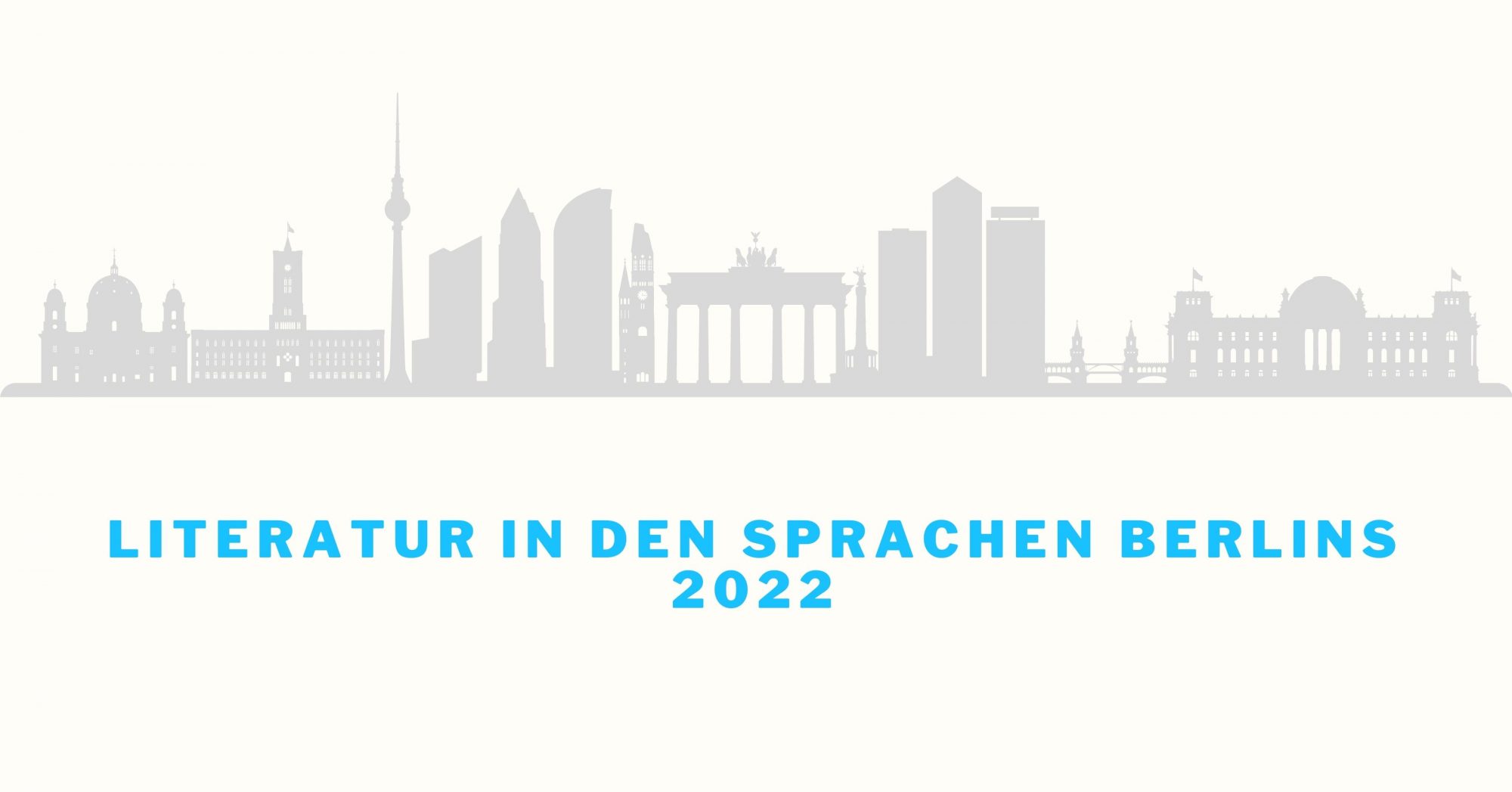
-
20 Mittwoch
19:30 UhrLCB-diplomatique.net
Saaldiskussion zum Launch des neuen Literaturkorrespondent·innen-Portals
Grußwort: Dr. Jens Schüring (Auswärtiges Amt)
Impulsbeitrag: Jacek Dehnel
Jacek Dehnel, Małgorzata Rejmer, Kate Connolly, João Paulo Cuenca, Christine Hamel
Moderation: Jenny Friedrich-Freksa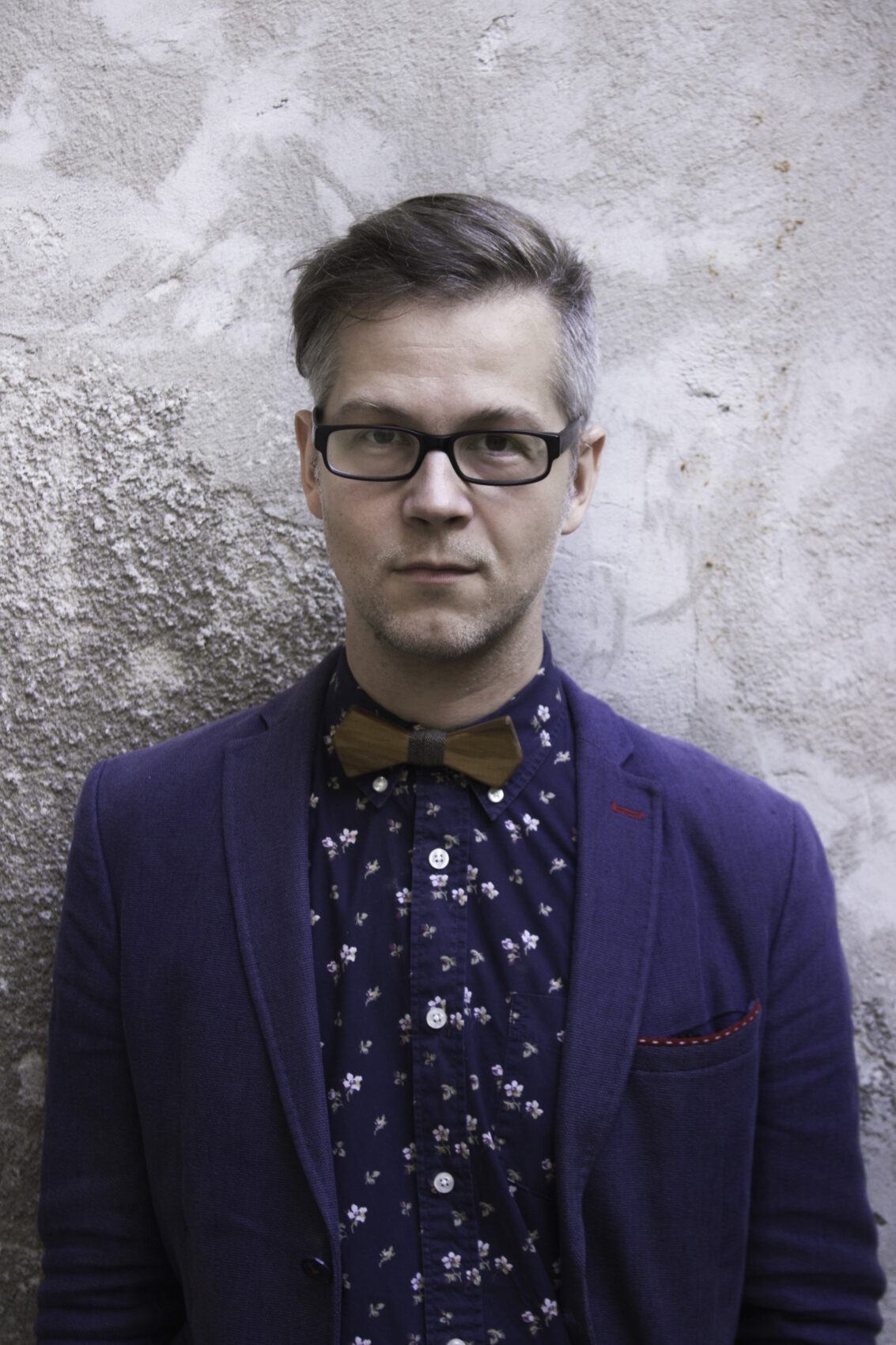
-
01 Mittwoch
Queer*East
Literatur, Musik und Performance aus Mittel-, Ost- und Südosteuropa
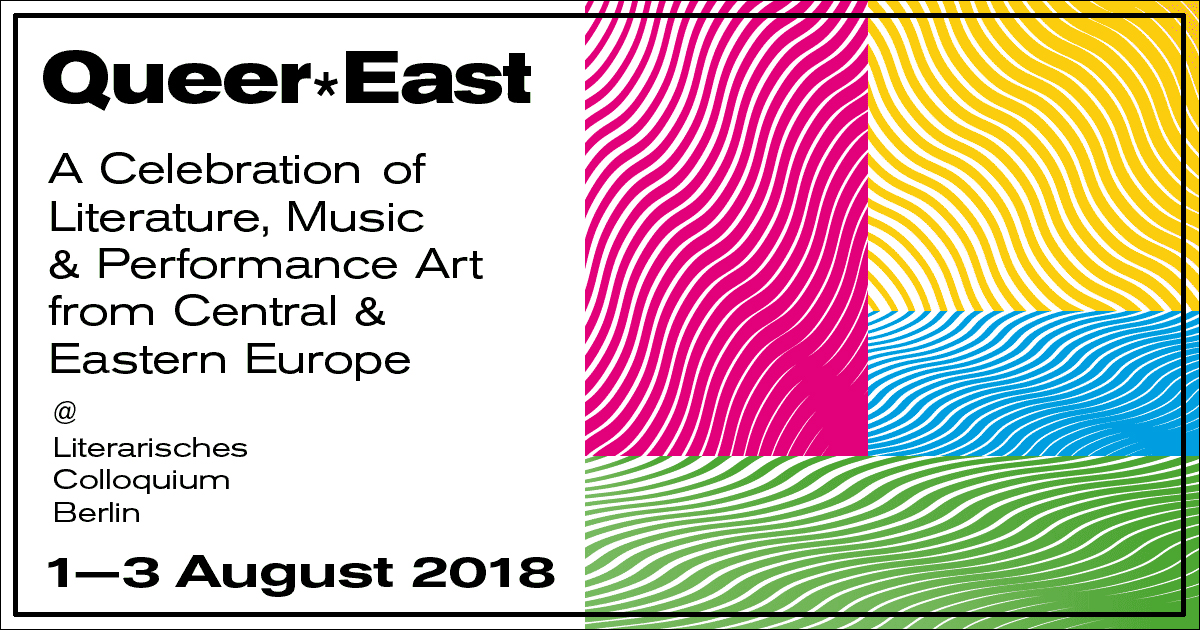
-
01 Mittwoch
Queer*East
Ein Festival mit Literatur, Musik Performance aus Mittel-, Ost- und Südosteuropa

-
26 Freitag
Sprache der verbrannten Erde
Mit Jacek Dehnel, Julia Fiedorczuk, Iwona Dorota Nowacka, Tomasz Ososinski, Zyta Rudzka und Arkadiusz Żychliński
Moderation: Jens Bisky
Veranstaltungen mit Jacek Dehnel
2022
September
2019
November
2018
August
Januar

